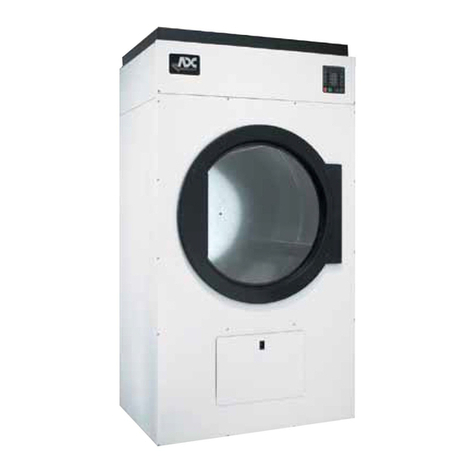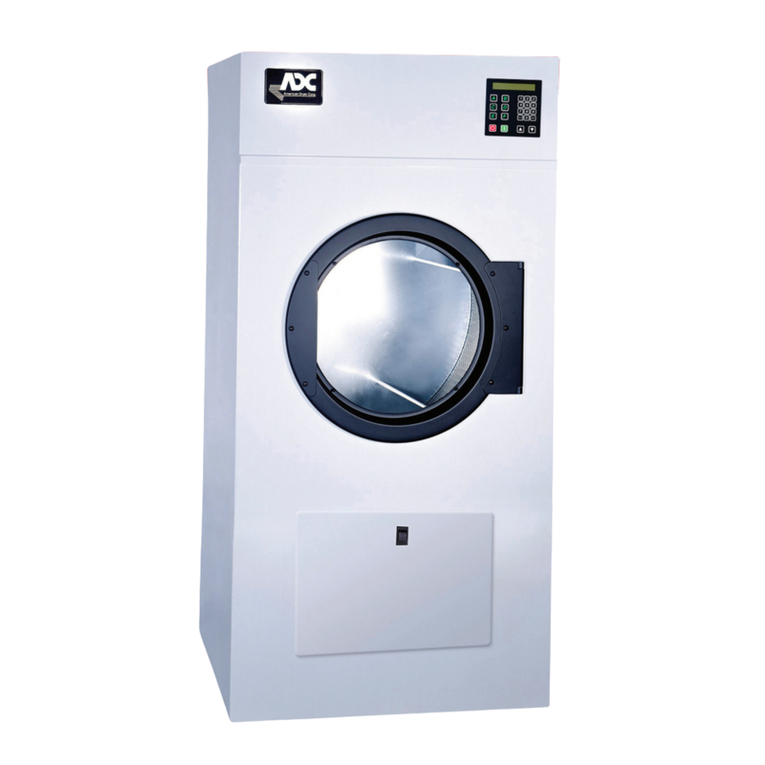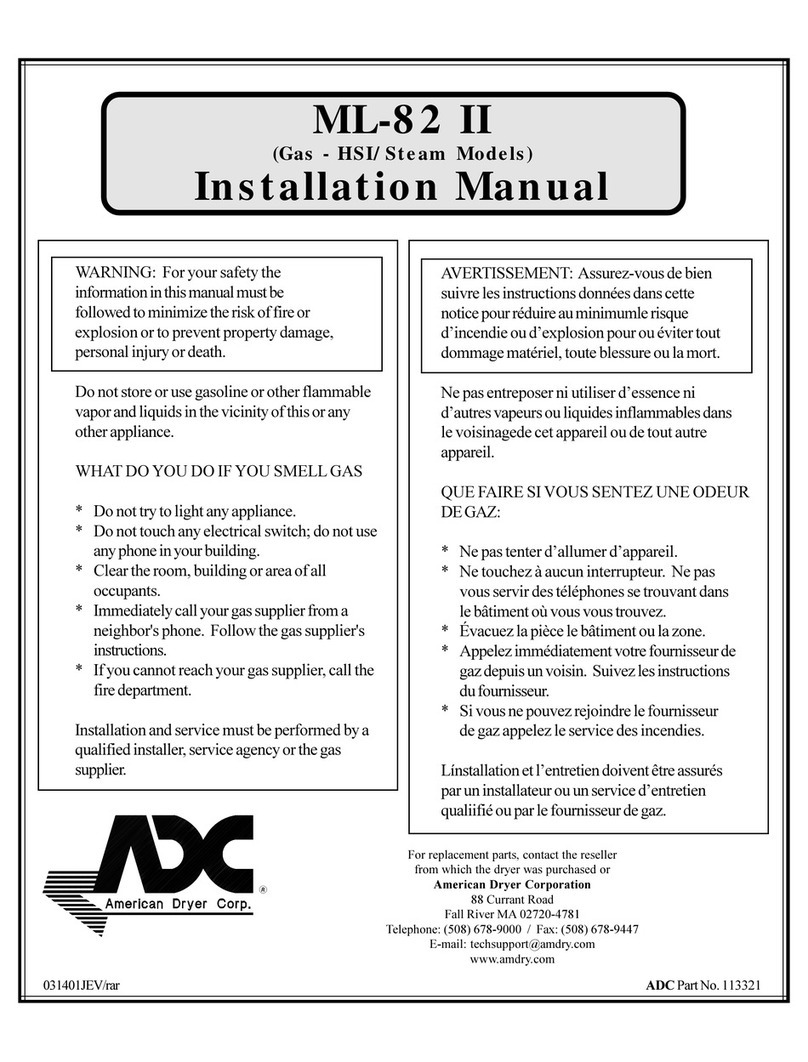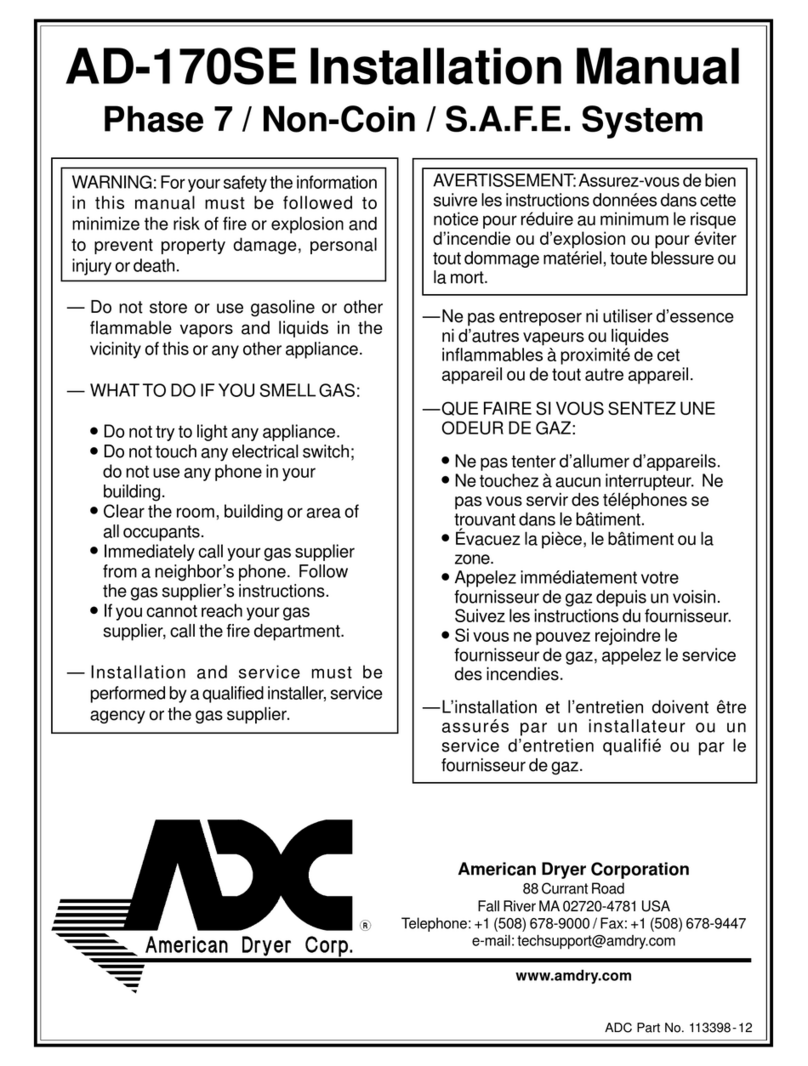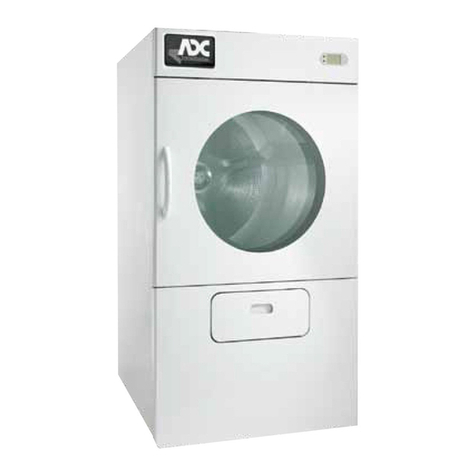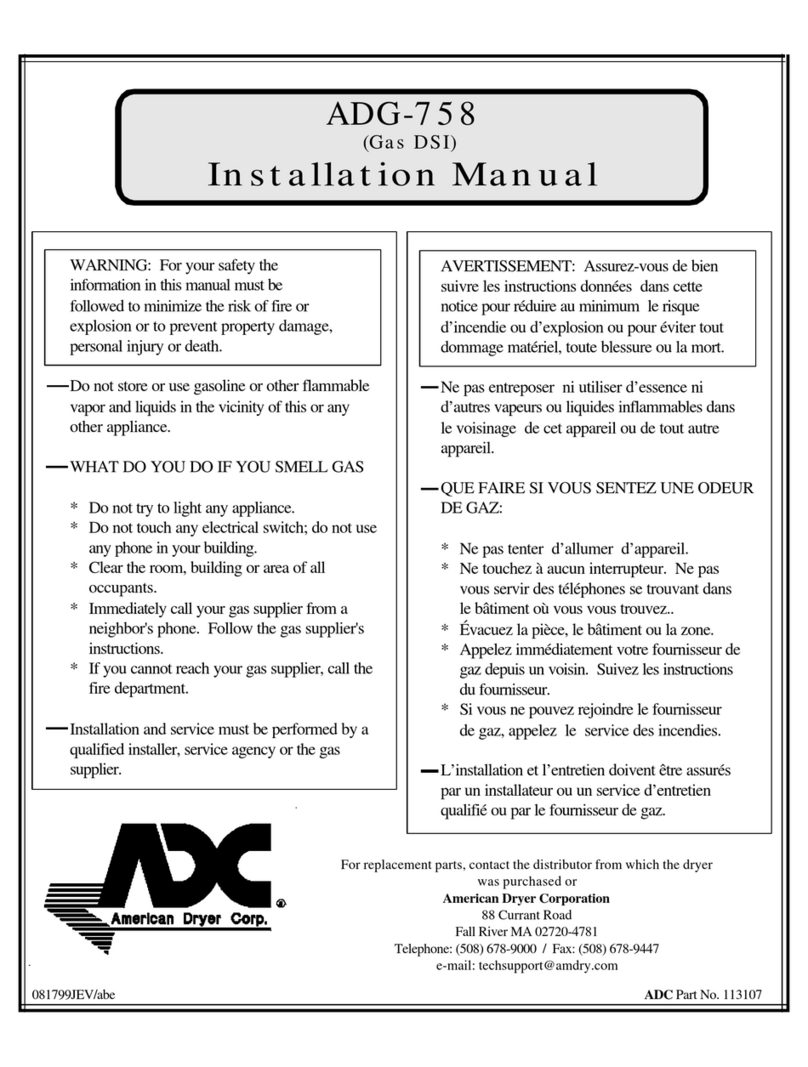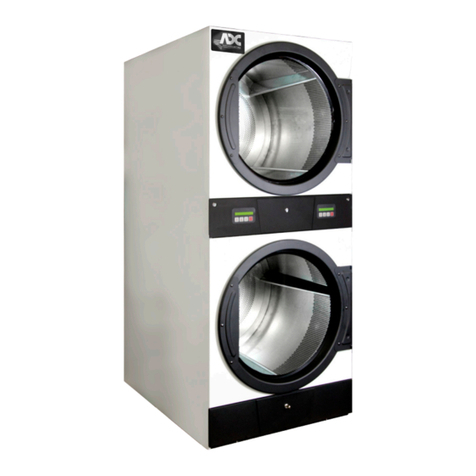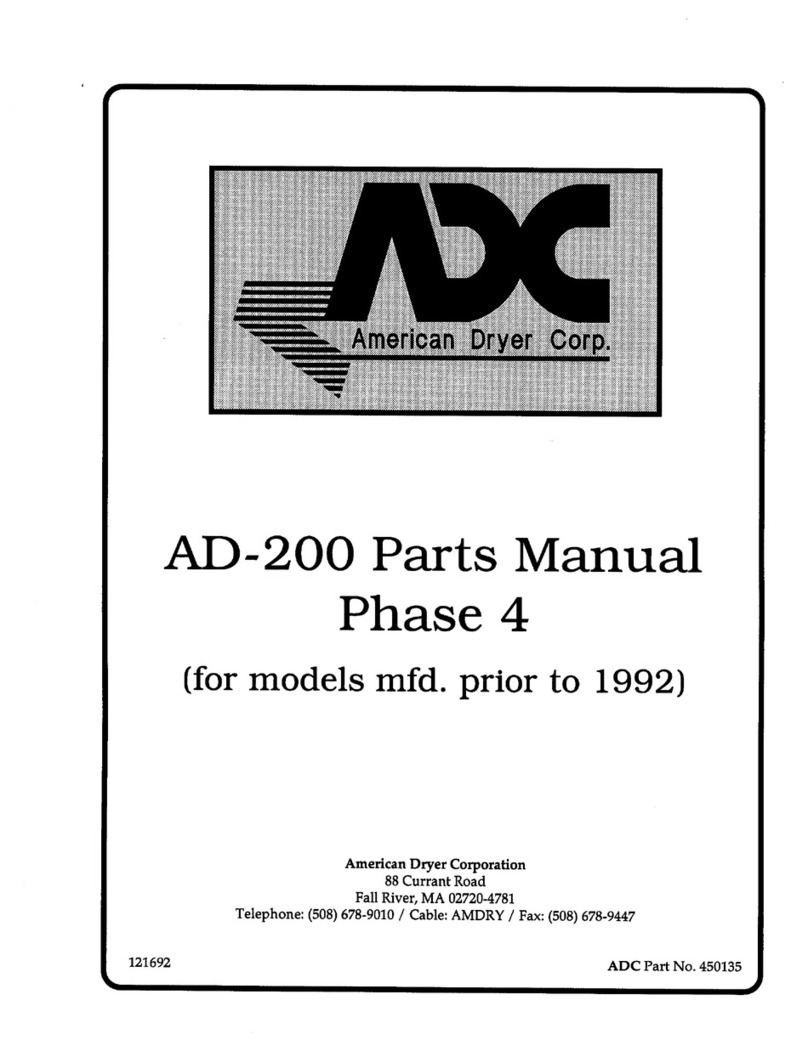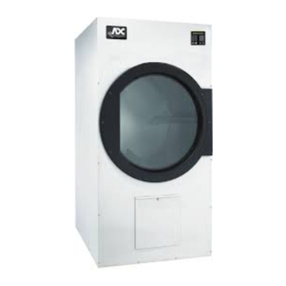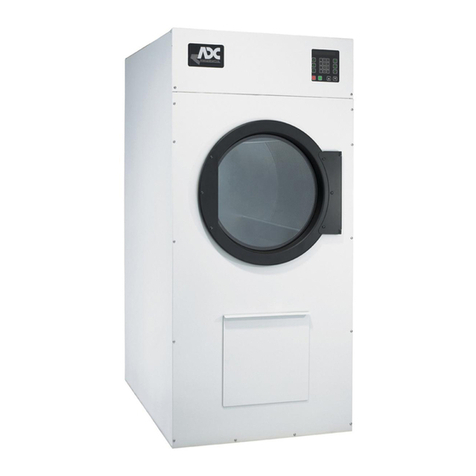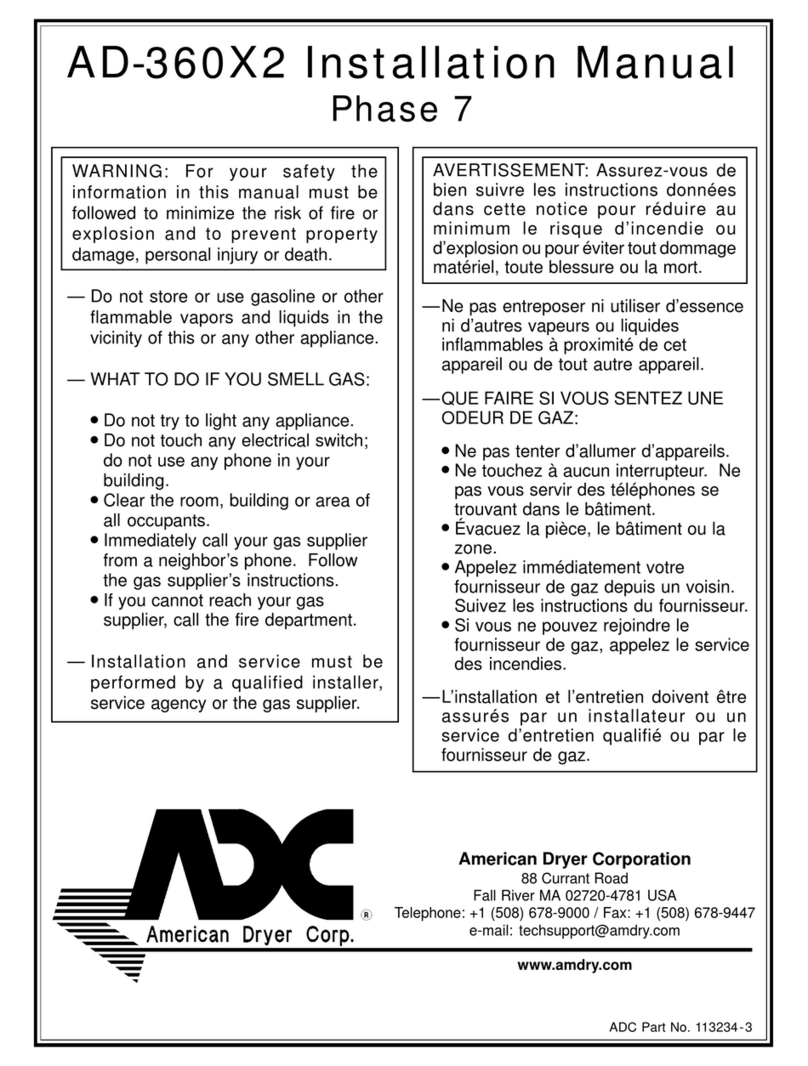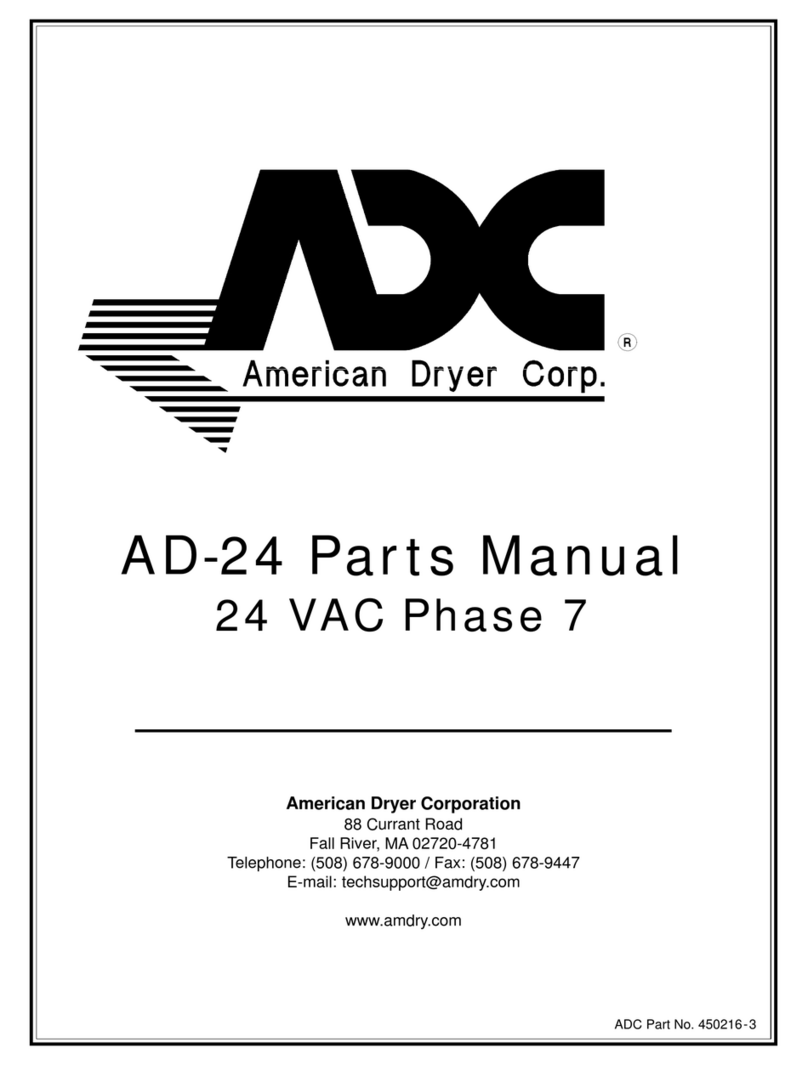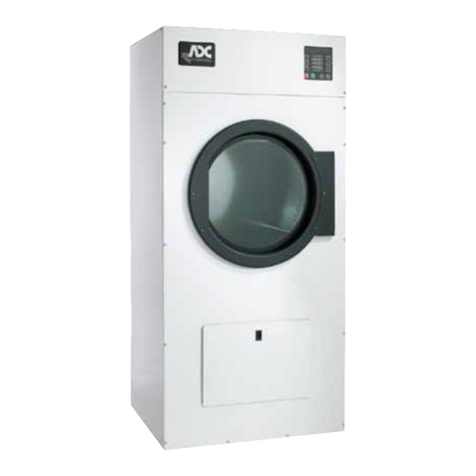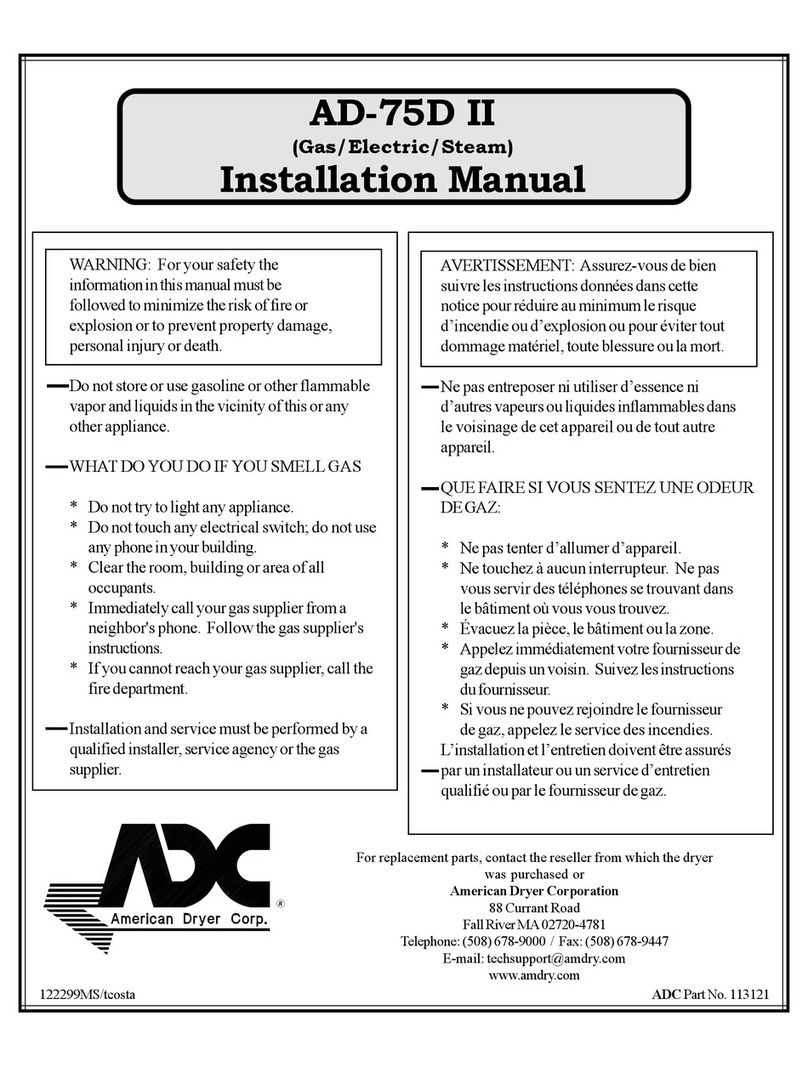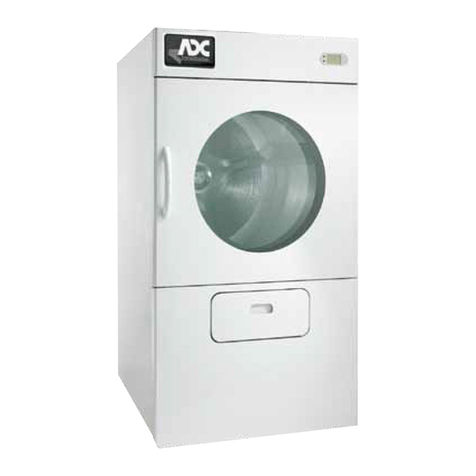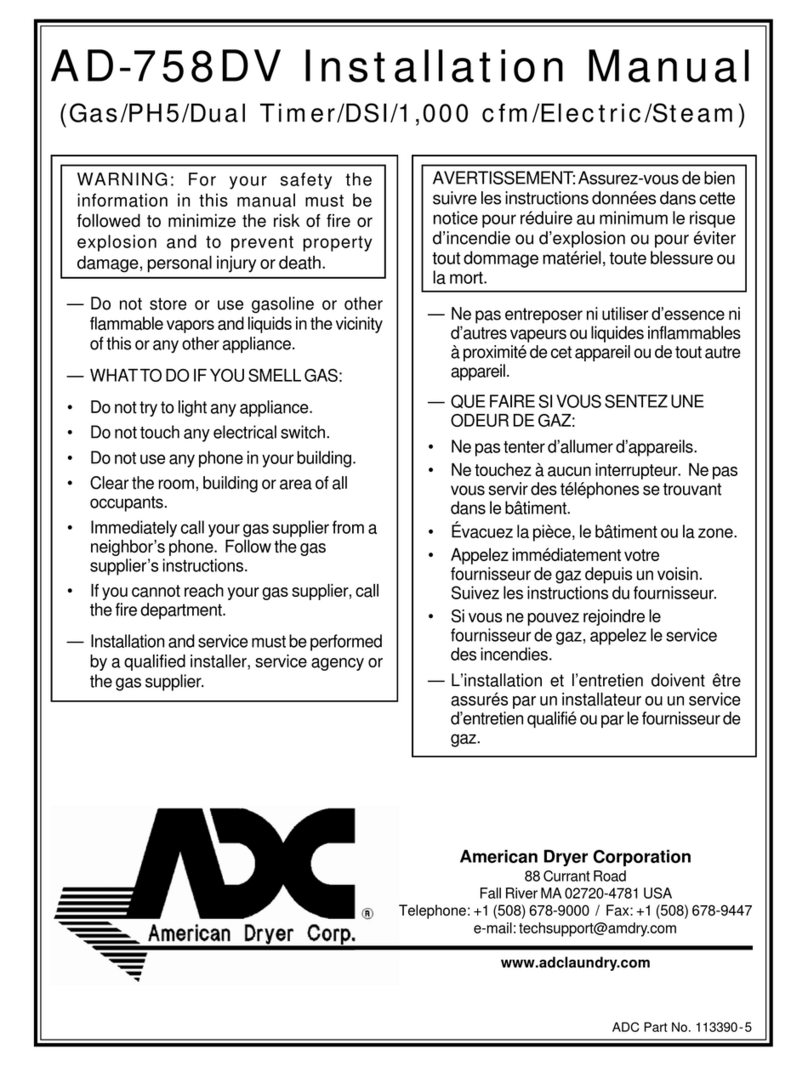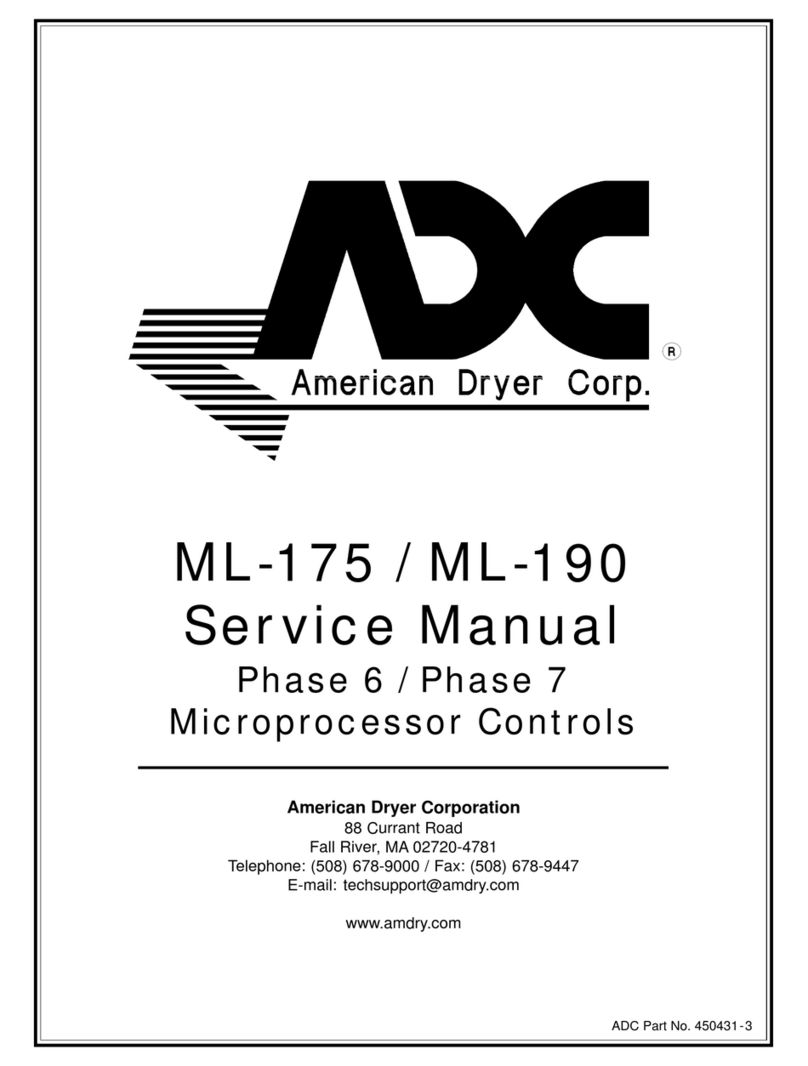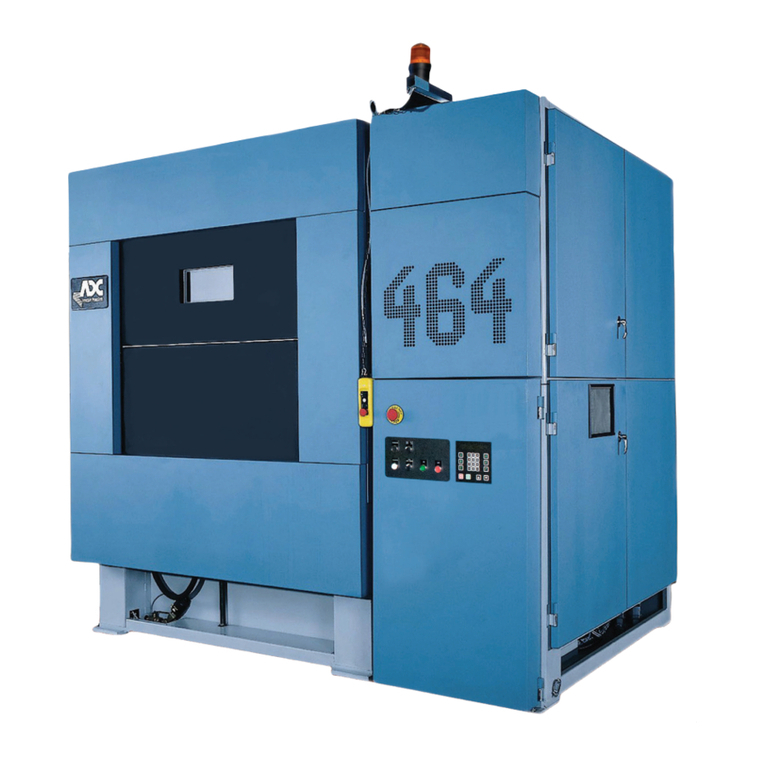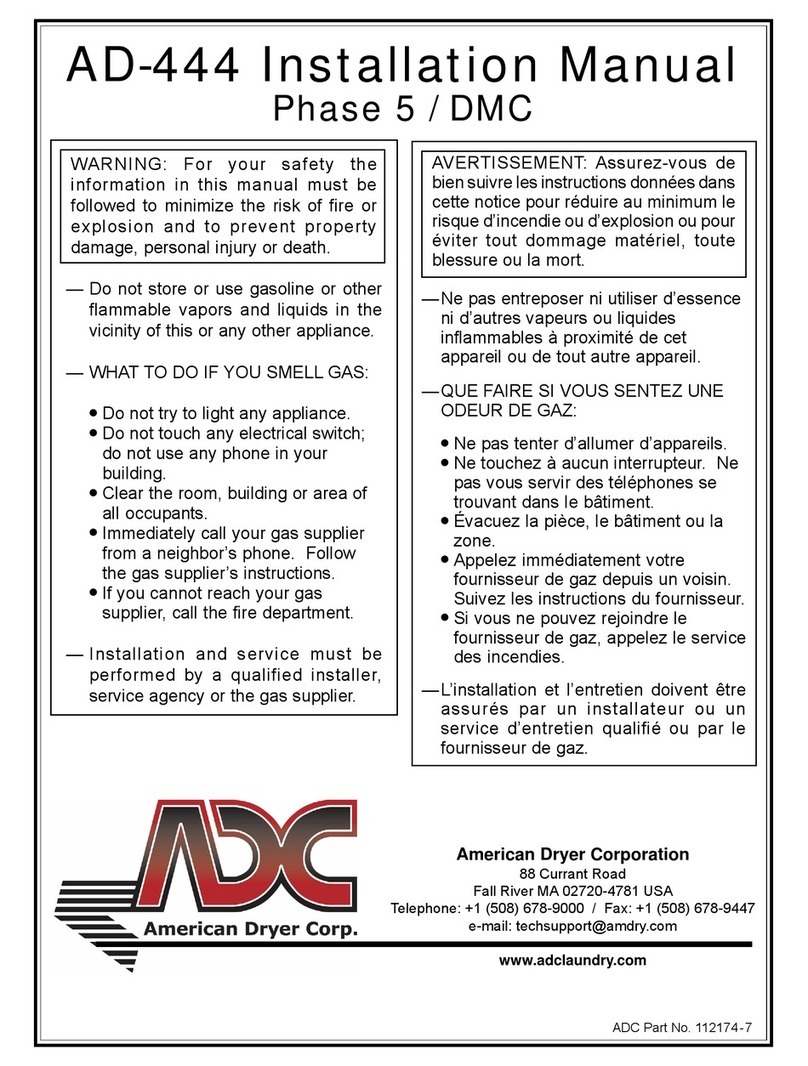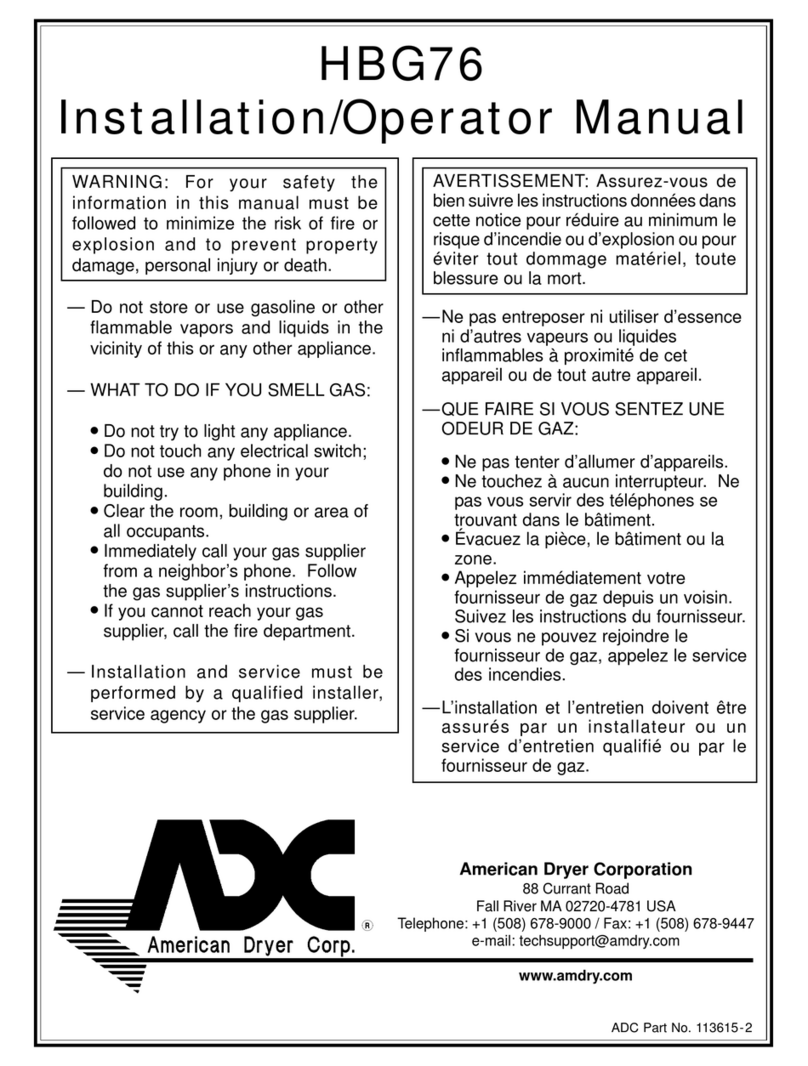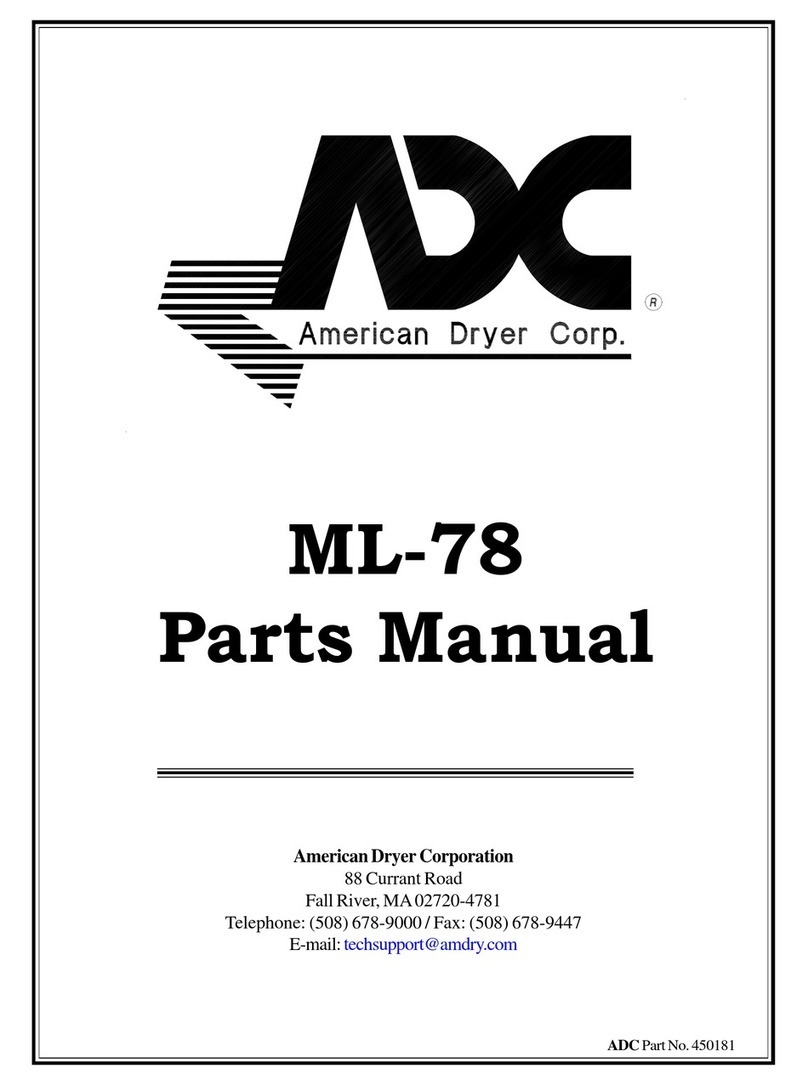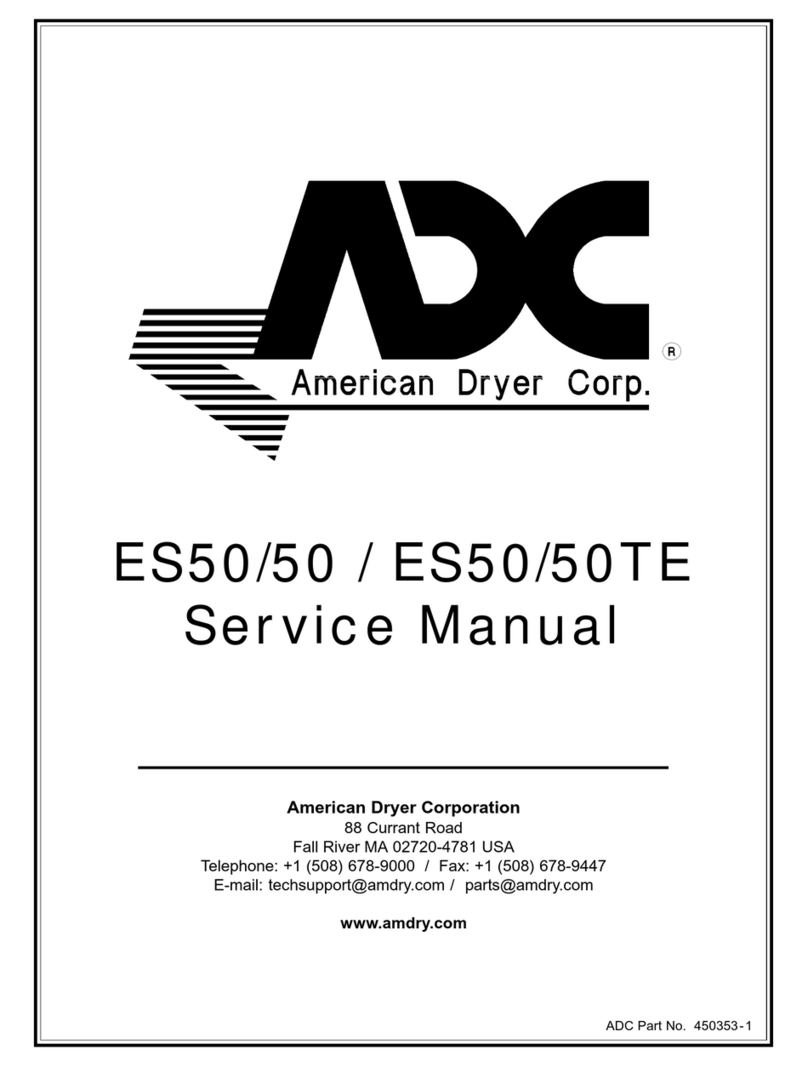
4 American Dryer Corp. 113202-10
MAXIMUM CAPACITY (DRY WEIGHT) 115 lb 52.16 kg
TUMBLER DIAMETER 42” 106.68 cm
TUMBLERDEPTH 41-1/4” 104.78 cm
TUMBLER VOLUME 33.10 cu ft 937.29 L
TUMBLER/DRIVE MOTOR 3/4 hp 0.56 kW
BLOWER/FAN MOTOR 3 hp 2.24 kW
DOOR OPENING (DIAMETER) 31-3/8” 79.69 cm
DOOR SILL HEIGHT 27-1/2” 69.85 cm
WATER CONNECTION 3/4”-11.5 NH
(North America)
3/4” B.S.P.T.
(Outside North America)
DRYERS PER 20’/40’ CONTAINER 4 / 8
DRYERS PER 48’/53’ TRUCK 9 / 10
VOLTAGE AVAILABLE 208-575V 3ø 3,4w 50/60 Hz
APPROXIMATE NET WEIGHT 1,260 lb 571.53 kg
APPROXIMATE SHIPPING WEIGHT 1,400 lb 635.03 kg
AIRFLOW 60 Hz 2,100 cfm 59.47 cmm
50 Hz 1,750 cfm 49.55 cmm
HEAT INPUT 343,000 Btu/hr 86,435 kcal/hr
EXHAUST CONNECTION (DIAMETER) 14” 35.56 cm
COMPRESSED AIR CONNECTION N / A
COMPRESSED AIR VOLUME N / A
INLET PIPE CONNECTION 1” F.N.P.T.
1” F.B.S.P.T.
(CE and Australia Only)
VOLTAGE AVAILABLE 208-575V 3ø 3,4w 50/60 Hz
APPROXIMATE NET WEIGHT 1,260 lb 571.53 kg
APPROXIMATE SHIPPING WEIGHT 1,400 lb 635.03 kg
AIRFLOW 60 Hz 2,100 cfm 59.47 cmm
50 Hz 1,750 cfm 49.55 cmm
EXHAUST CONNECTION (DIAMETER) 14” 35.56 cm
COMPRESSED AIR CONNECTION N / A
COMPRESSED AIR VOLUME N / A
OVEN SIZE
kW Btu/hr kcal/hr
60 204,700 51,600
72 245,700 61,900
VOLTAGE AVAILABLE 208-575V 3ø 3,4w 50/60 Hz
APPROXIMATE NET WEIGHT 1,555 lb 705.34 kg
APPROXIMATE SHIPPING WEIGHT 1,695 lb 768.84 kg
AIRFLOW 60 Hz 2,100 cfm 59.47 cmm
50 Hz 1,750 cfm 49.55 cmm
STEAM CONSUMPTION 375 lb/hr 170.10 kg/hr
OPERATING STEAM PRESSURE 125 psi max 8.62 bar
EXHAUST CONNECTION (DIAMETER) 14” 35.56 cm
COMPRESSED AIR CONNECTION 1/4” Quick Connection
COMPRESSED AIR VOLUME 0.75 cfh 0.02 cmh
BOILER HORSEPOWER (NORMAL LOAD) 11 Bhp
SUPPLYCONNECTION 1-1/4” F.N.P.T.
RETURN CONNECTION 1-1/4” F.N.P.T.
SECTIONII
SPECIFICATIONS/COMPONENTIDENTIFICATION
A. SPECIFICATIONS
Electric
Steam Gas
Shaded areas are stated in metric equivalents 5/26/06
IMPORTANT: Steam dryers mustbeprovided with a clean, dry, regulated 80 psi +/- 10 psi (5.51
bar +/- 0.69 bar) air supply.
NOTE: ADCreservestheright tomakechanges inspecifications atanytime withoutnoticeor
obligation.






